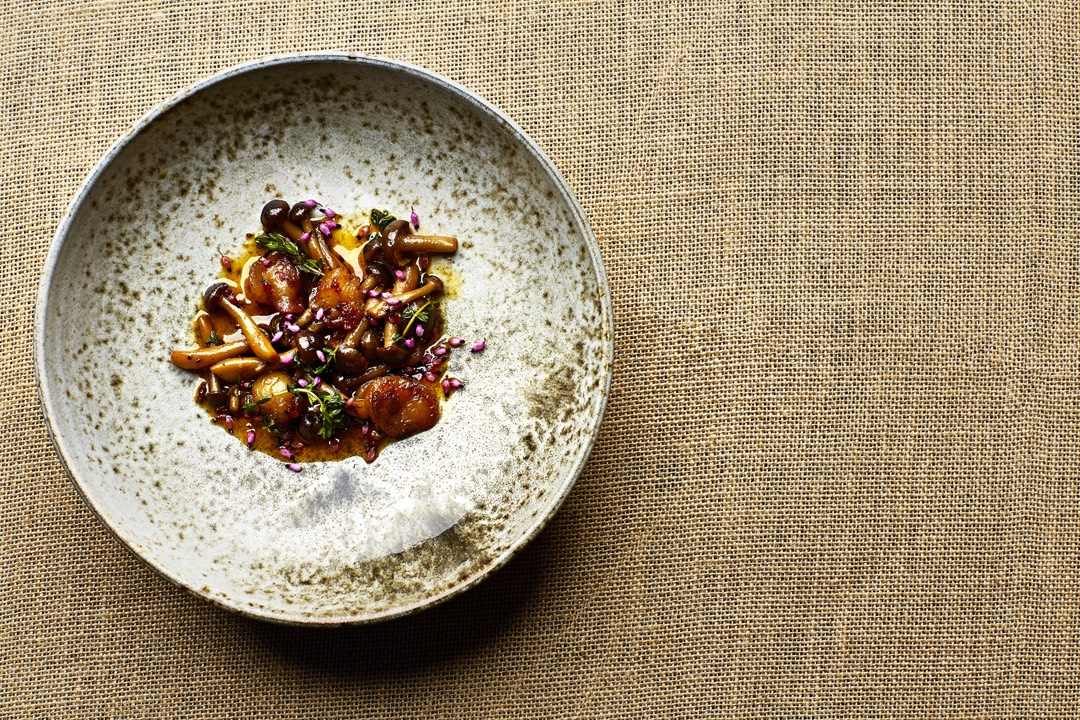Wild Enoki
When it comes to flavor, wild enoki isn’t going to win any awards. But as one of the few mushrooms that grows during the cold months, it’s earned its place in the culinary repertoire.
-
Where to Find It
Wild enoki grow abundantly on dying hardwood trees—especially poplars—and stumps.
Deciduous forests, towns, hedges.
-
When to Find It
Wild enoki are available as long as temperatures stay above or at the freezing point. Their peak season is normally between December and February, but they can stick around until early spring.
Entire mushroom: November, December, January, February, March, April.
-
How to Spot It
The cap of the wild enoki can grow up to ten cm in diameter, but is more often between three and six cm. Younger mushrooms are honey yellow and dome-shaped with inrolled cap rims, but as they age the caps flatten out and turn more of a rust color, while the rim gradually lightens until the mushroom looks like a smalle brioche. In wet weather the caps usually become moist and shiny. Young mushrooms have a light yellow stem that becomes hollow and reaches a height of up to 10 cm as it ages; the stem of older mushrooms is covered with a velvety layer and is deep brown to black, darkening as it gets closer to the earth.
-
How to Pick It
Only the young, tender specimens are good for eating, and only their caps (the stems are too tough). Pick wild enoki by tugging their caps off, leaving behind the stems. You can gather frozen mushrooms too.
Risk of misidentifying the plant
There is no risk of mistaking the plant for another dangerous or undesirable plant.


